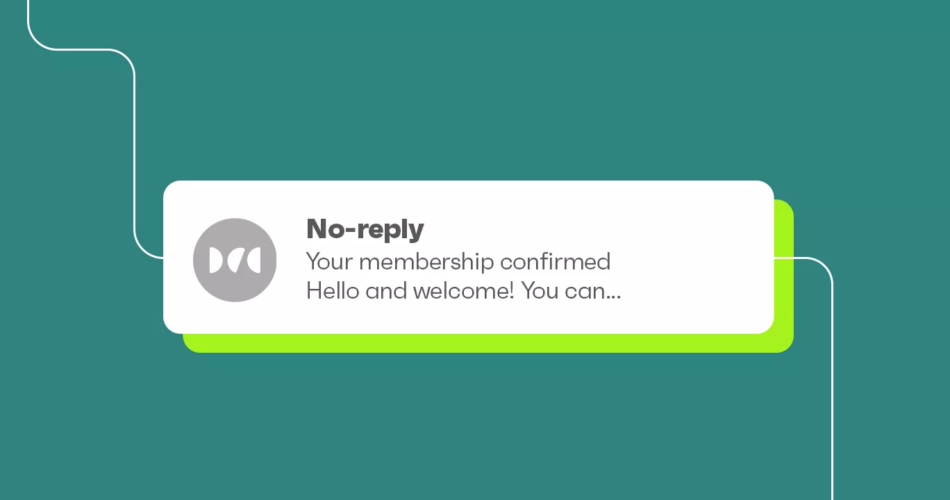What is a noreply email?
A noreply email is a type of email address that uses the format “[email protected]” In most cases, the main reason why a company would opt for a noreply email address is to discourage the receivers from responding to its email campaigns or other emails.
So, what if you reply to a noreply email?
Responding to a noreply email is a waste of your precious time, as the sender will not receive your response.
Instead, your email service provider will send you a message indicating that your email was not sent.
Why should you not use a noreply email?
Have you just discovered how to send a noreply email?
You are probably over the moon with joy as you celebrate that you won’t need to reply to many emails anymore.
But that’s not the case with noreply emails.
The thing is, you are on a downward spiral, and you will not like the type of landing that awaits you if you proceed with it.
Though they might seem easy to use, noreply emails can be a major headache for both senders and recipients.
Remember, your customers are individuals, and they would want to communicate with your brand. Sending them noreply emails will only communicate the message that their opinions are not valued; they should take it or leave it.
End result? They will likely leave it.
Here are the significant problems with noreply emails:
1. Negative impact on email deliverability
A noreply email can hurt email deliverability because the recipients can decide to auto-filter all noreply messages and send them to their spam boxes.
Is there any email marketer who would love that?
While sending a noreply email, you intend to grab your recipient’s attention. When the email is sent directly into the spam box, it reduces your chances of the noreply email being seen.
To be safe and to avoid a bad sender reputation, it’s advisable to include an option that allows your receivers the freedom to unsubscribe.
In that case, if someone feels they can’t tolerate a one-sided email, they can unsubscribe at will. You can include this option in the email sign-off.
For instance, note how Slack provides an unsubscribe option in its noreply emails.
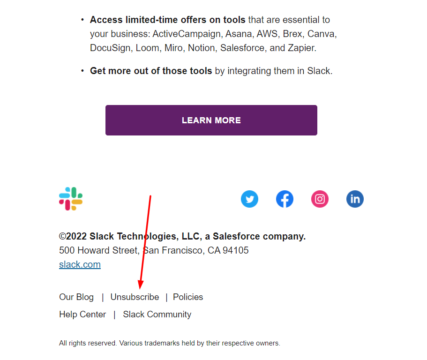
In fact, even Gmail allows you to do so by clicking right next to the noreply email address.

What’s more?
Noreply emails can be challenging to track and manage too. This means it’s not so easy to know whether you are making progress or not.
They don’t provide any feedback or tracking information for senders, making it difficult to know whether or not the email was received and read.
This can lead to a lot of wasted time and effort on your part as the sender, trying to follow up with recipients who might have never received the email in the first place.
2. Negative impact on customer engagement and experience
Another reason you should never use noreply emails is that they negatively impact customer engagement and experience.
Who likes being spoken to without being given a chance to speak? No one.
In that essence, these noreply emails are ironically communication barriers.
They can cause missed opportunities, as they prevent recipients from responding to the email. This can lead to a loss of potential business or collaborations and a loss of valuable feedback.
In addition, noreply emails often result in confusion and frustration for recipients, who are not sure what they are supposed to do with the email.
This may lead to a lot of wasted time and effort on the part of the recipient, trying to decide on what to do with an email they never asked for from a sender who doesn’t even want to hear back from them.
You could instead give them more control here like Medium does. It’s one of the best noreply email samples. See how it gives numerous options at the end of its noreply emails.
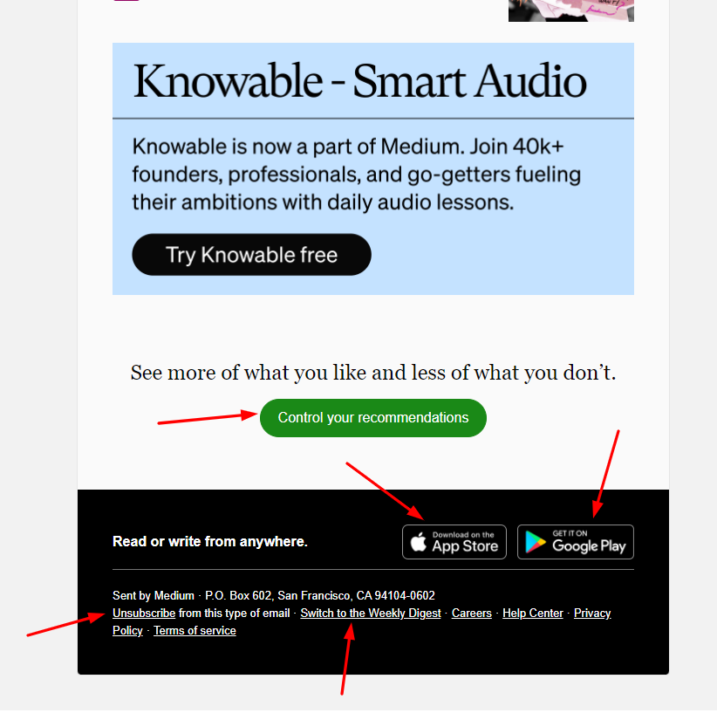
What alternatives should you use for noreply emails?
You can use several strategies to replace noreply emails and improve communication in your business.
Here are a few effective tactics:
1. Use transactional emails
This is a type of email that is sent to complete or confirm a transaction. This could be anything from a purchase confirmation to a shipping notification to an invoice.
Transactional emails are often seen as more important than other types of emails, and they often have a higher opening rate as well as click-through rate (CTR).
This is because they are usually directly relevant to the recipient’s interests or needs. They are also more personalized and customer-friendly.
Below are tips to ensure your transactional emails are both effective and user-friendly.
- Make sure that your transactional emails are well-designed and easy to use.
- You should also make sure that your transactional emails are correctly optimized for mobile devices, as many people now access their email primarily through their smartphones or tablets.
- Keep your messages concise and easy to read.
- Use clear, action-oriented language.
- Make sure you send relevant messages to each recipient.
- Include a CTA (call to action), if appropriate.
- Test varying subject lines and content to see what works best.
- Monitor your open and click-through rates, and make adjustments as necessary.
These will help you increase customer engagement and loyalty. In fact, transactional emails generate more sales continually as they engage the recipient.
Conversion rates for shipping confirmation messages increased 53% YoY, while that of order confirmation messages increased 24% YoY. The conversion rate of order confirmation emails remains one of the highest among all.

Are you still contemplating the use of a noreply email as you don’t know where to start as far as transactional emails are concerned?
Don’t look back; try these:
- Order notifications: Let your customers know that you have received their orders.
- Shipping notifications: Keep your customers updated when their orders are shipped.
- Cancellation notifications: If someone has canceled an order, let them know that you have acknowledged the cancellation.
- Password resets: Alert a customer whose password has been reset. It shows you care about their security.
- Customer feedback requests: Ask for feedback from your customers to know what to improve and what is going well.
For instance, note how Grammarly sends this email when anyone purchases a subscription to its premium plan.
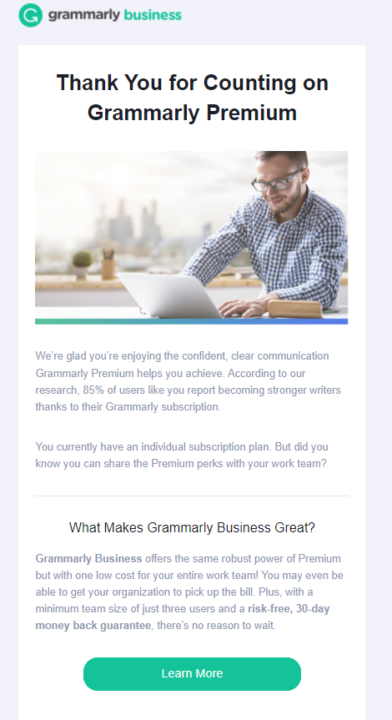
2. Create a specific address to respond to emails
Another way of avoiding noreply emails is by coming up with a specific email address to respond to emails.
By now, it may be clear that noreply emails are not a very good idea.
To avoid killing your email marketing, you should try and create a separate email address on which your audience can respond to you.
Your customer support team can handle this email to ensure that your brand is able to communicate with the audience.
For instance, note how the below email clearly specifies the email address on which the recipients can reach out to the brand.
What’s more?
You can use a specific person’s first name to make your email more friendly as it’d then seem that the email is coming from a person and not an organization.
This doesn’t necessarily have to be a real team member; it can be some random name that you like to add that gives the feeling that the message is from a human sender.
You can also use a robot/mascot’s name, like Taco from Trello. If you have ever received or seen an email from “[email protected]” then you can get the point.
If not, don’t worry. Check the image below to see the cute Trello dog named taco. It’s no doubt that many people would rather chat with Taco than receive a noreply image.
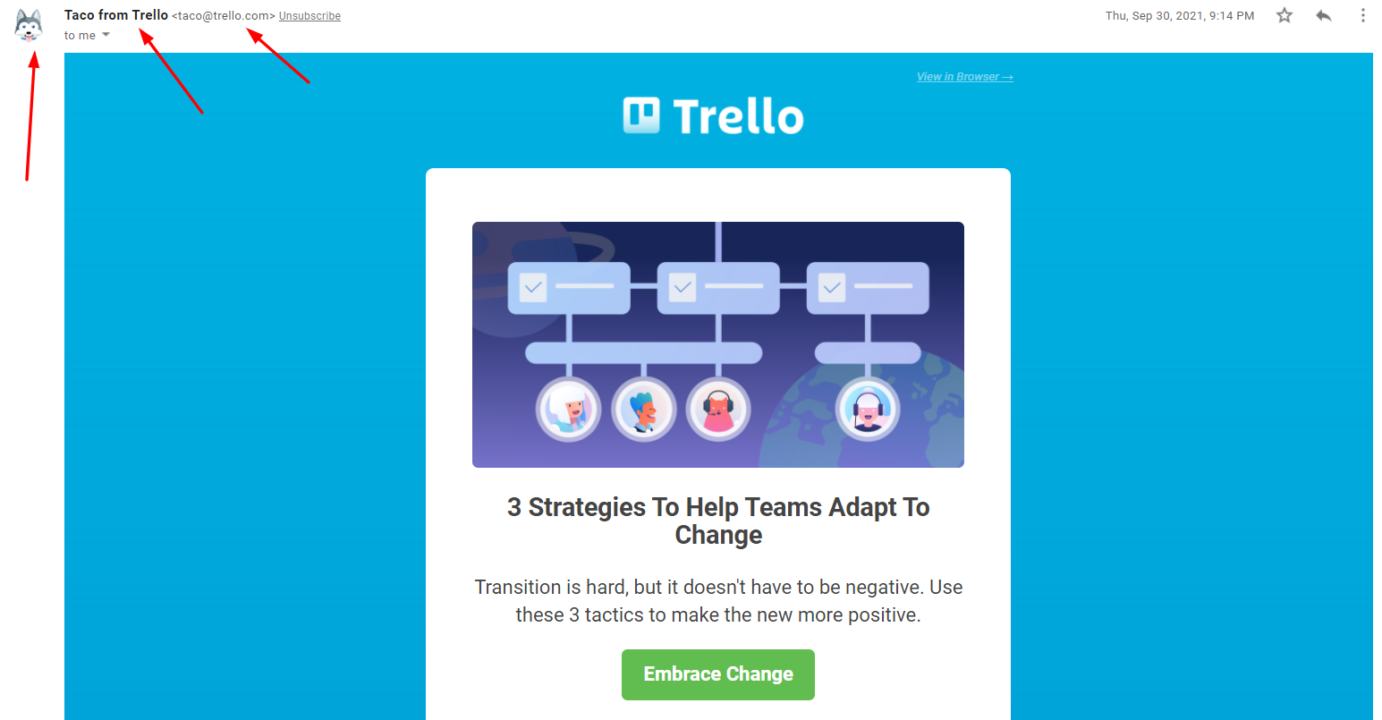
Another excellent example is “[email protected]”. It sounds better than a noreply address. It’s actually the exact opposite of noreply and can make the receiver feel invited to view the email content and reply to it.

Adding some humor to your emails is another great way of personalizing your communication with your subscribers, making them feel that they are dealing with a real person with emotions.
3. Track the unsubscribes
If a recipient wishes to unsubscribe, honor their request. Otherwise, you risk pushing them to mark your email as spam.
But, how do you keep track of your unsubscribers?
Mailing lists can be an effective way to keep in touch with your customers, but they can be a nuisance as well if you have too many unsubscribers.
There are two main ways to keep track of those who are unsubscribing:
- Use an automated system that will keep track of the unsubscribers for you.
- Keep track of them manually.
Automated tracking
It can be challenging to keep track of your current subscribers and those who have unsubscribed. But luckily there are ways of making the process automatic.
An automated system can track unsubscribes. This system can be set up to remove people from the mailing list when they unsubscribe automatically, so you don’t have to worry about it. This can help to keep your email list clean and organized.
Another option is to use a service that manages unsubscriptions for you.
This service will keep track of everyone who unsubscribes from your list and make sure they are removed automatically. This can help you avoid any headaches when it comes to managing your list.
Manual tracking
You can track email unsubscribers manually by keeping track of the email addresses that unsubscribe.
This can help you determine which emails are getting deleted or marked as spam, and you can adjust your email list accordingly. You can ensure that your email list remains healthy and effective by tracking email unsubscribers manually.
Either way, it’s essential to keep track of who has unsubscribed so that you don’t continue to send them emails as that could spoil your deliverability.
It’s also critical to ensure that your unsubscribing process is easy to find and use. You may want to include an unsubscribe link in every email that you send. This allows your customers to unsubscribe if they no longer wish to receive your emails.
What if the unsubscription rate is too high?
So you’ve set up an email list and started emailing potential leads, but to your dismay, they keep unsubscribing from your emails.
What’s the deal?
Well, if you see your customers leaving, then it’s high time you put your house in order. There are a few possible ways you can try to remedy the situation.
First, make sure that you’re only emailing people who have explicitly opted in to receive emails from you. If you’re not sure whether someone has subscribed or not, it’s best to err on the side of caution and not email them. This can be done by leveraging two-factor authentication in the form of verifying email addresses.
For instance, note how Battle.net does it.

Next, make sure that your content is exciting and relevant to your subscribers. If all you’re sending them are sales pitches, they’re going to be quick to unsubscribe. It’s thus important to take feedback from them when they unsubscribe.
Try mixing up your content with blog posts, news updates, and other types of content that will interest your subscribers.
Finally, ensure that your emails are well-written and easy to read. Use a clear and concise headline, break up your content into short paragraphs, and use eye-catching images.
If your email is easy to read and enjoyable to look at, people are more likely to stick around until the end.
Now you are most likely wondering what it takes to come up with a good email list to avoid having many unsubscribers.
The best way to avoid falling into the spam trap is by constantly ensuring your email list is up-to-date.
4. Focus on support throughout the customer journey
As we mentioned earlier, customer engagement and experience are some of the areas that are significantly hit when using noreply emails. It is essential to focus on support throughout the customer journey to counter this.
For instance, a customer might be facing a specific challenge but does not know how to handle it.
You need to think ahead and anticipate the kind of questions that your customers might need answers to and address those issues.
Add links to FAQ pages, technical documentation, and other resources that you think might be of extra value to your customers.
Here are some tips for ensuring your customers feel taken care of:
- Make sure that you’re responsive to customer inquiries. If someone needs help with something, make sure that you address their concerns as quickly as possible. About 71% of customers call it the main reason behind good customer service experiences.
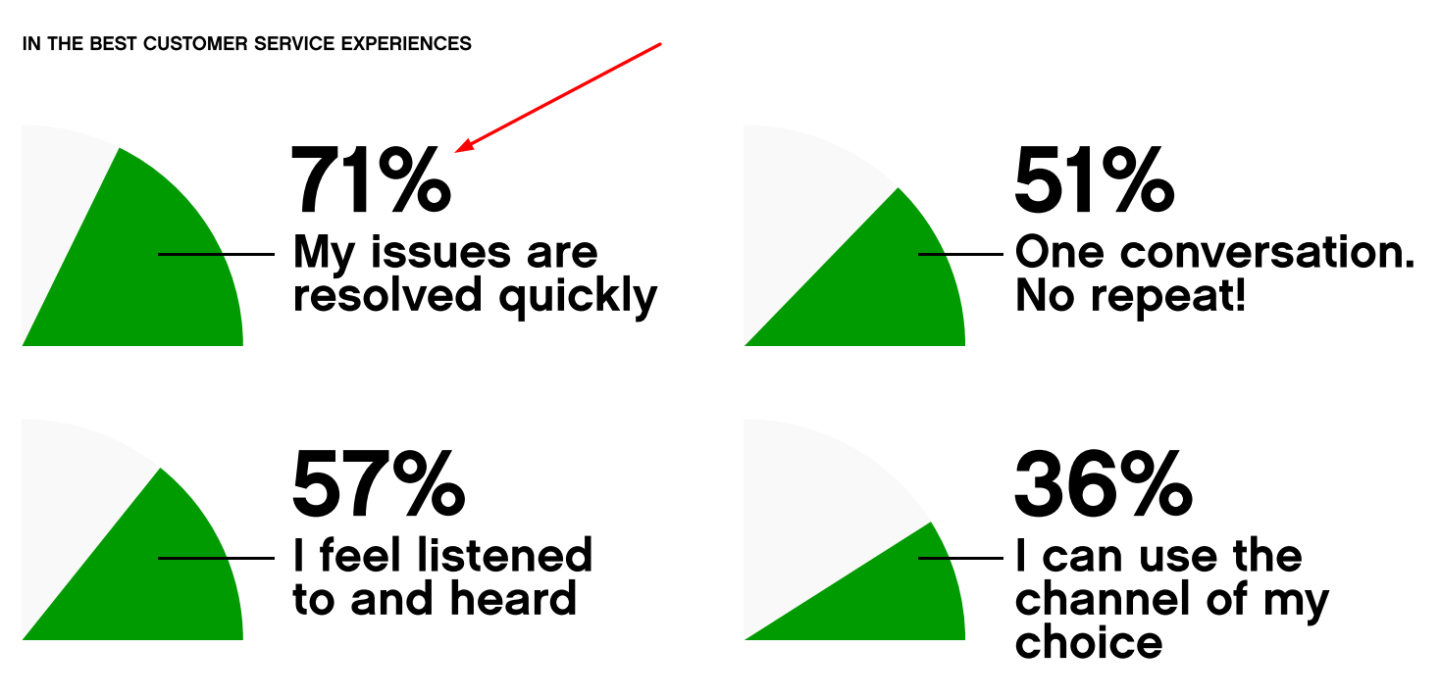
- Keep your email list up-to-date. If you have a new product or even service to announce, make sure that your email list subscribers know about them.
- Offer incentives for signing up for your email list. If people know that they’ll get something in return for signing up, they’re more likely to do so. This could be discounts on your products or services to exclusive access to new products or announcements.
- Keep your email list content interesting. If people get bored with your content, they’re more likely to unsubscribe. Try to mix things up, and include a variety of different types of content in your newsletters. Note how Claritas keeps its emails interesting.

- Make it easy to unsubscribe from your email list, even through your noreply emails. If people no longer want to receive your newsletters, make it easy for them to unsubscribe. This will help keep your subscriber list as clean and organized as possible.
By following these tips, you can make sure that your customers feel supported and appreciated even when you use noreply emails. This will increase their engagement with your business and increase the chances that they’ll become long-term customers.
Other alternatives
Are you still interested in a noreply Gmail address despite all these alternatives?
It would be good to know that the list of alternatives doesn’t end at using transactional emails, using a specific email to reply, tracking unsubscribers, and focusing on customer support.
Here are three more tips that will save you a big deal and make you bid goodbye to noreply emails:
- Use the Subject Line to Indicate that Response is Requested: When sending an email that requires a response, use a subject line that indicates that a reply is requested. This will help ensure that recipients know what to do with the email and that they aren’t left wondering what it is they are supposed to do.
- Use an Automatic Reply System: If you find yourself sending out a lot of noreply emails, consider using an automatic reply system instead.
This will enable receivers to reply to the email without having to worry about whether or not their reply will actually be received. The automated reply works as a confirmation that their email has been received. Note how the below email mentions the same.

How to manage the responses and avoid being overwhelmed
Okay, so you have made a positive turn and decided to leave noreply emails.
What’s next?
Are you going to spend the whole day in front of your computer responding to customer messages?
There’s no need to do that.
Here are some tips you can use to avoid being overwhelmed with post-noreply responses:
1. Use a dedicated email address
It’s normal to want to use your usual email address to send out newsletters and other marketing emails to your clients, but that is never a good idea. This is more so for small businesses and organizations.
The best move is to have a specific email address set aside for this purpose so that you can easily differentiate between your regular business emails and the responses from customers.
For example, note how the below email is specifically meant for support queries.

2. Make use of your customer service software
It’s likely that your organization, if it’s a large one, is already using customer service software like Zendesk. These help in handling customer service tickets through a specific email such as [email protected]
In most cases, you can start by sending a personalized email, but any reply will get directed to the support account. That way, you’ll not have much to worry about, and you’ll still have dealt with the noreply problem.
3. Filter out automated responses
Automated responses are not worth your time. They are typically sent when someone is not in the office or when the email bounces.
The good thing is most email service providers offer the option of setting up rules for filtering messages.
This tool can come in handy at this juncture, as you’ll be able to filter out emails with words such as “message delivery notification” or “automated response.”
Those messages can be sent to a different folder to avoid cluttering your regular inbox.
4. Think ahead
Just as we had mentioned before, always anticipate what your clients might want to ask and provide the answer in advance.
A single link to your FAQ page might be the answer to several customers’ questions, as they will be able to follow the link without necessarily having to bombard your inbox with questions.
In this example, you can see a “Read the blog” button to lead the recipients to more posts that can answer some of the questions they could otherwise have wanted to ask.
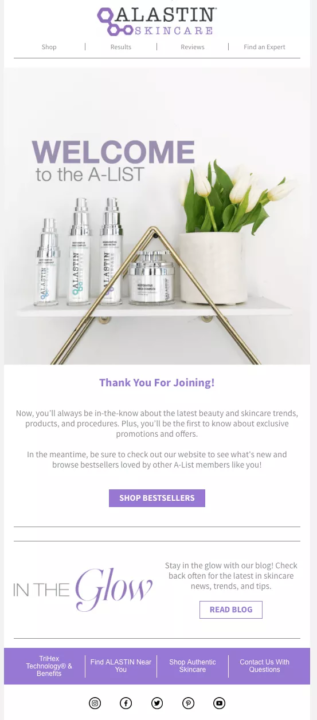
Regardless of whichever option you will find more straightforward, being proactive will save you from a lot of stress and time wastage.
Final comments
If someone asks you “What is a noreply email address?”–you now have the answer.
Instead of risking your sender reputation, killing customer morale, and lowering deliverability, you should consider ditching noreply emails and go for a more acceptable alternative.
As you have seen, noreply emails are quite a pain and can crush your email marketing progress in no time.
Instead, it’s better to invest in creating various email accounts and managing them using an email marketing platform. So, get started with Omnisend now for free and give your email campaigns the growth they deserve.
Source link


